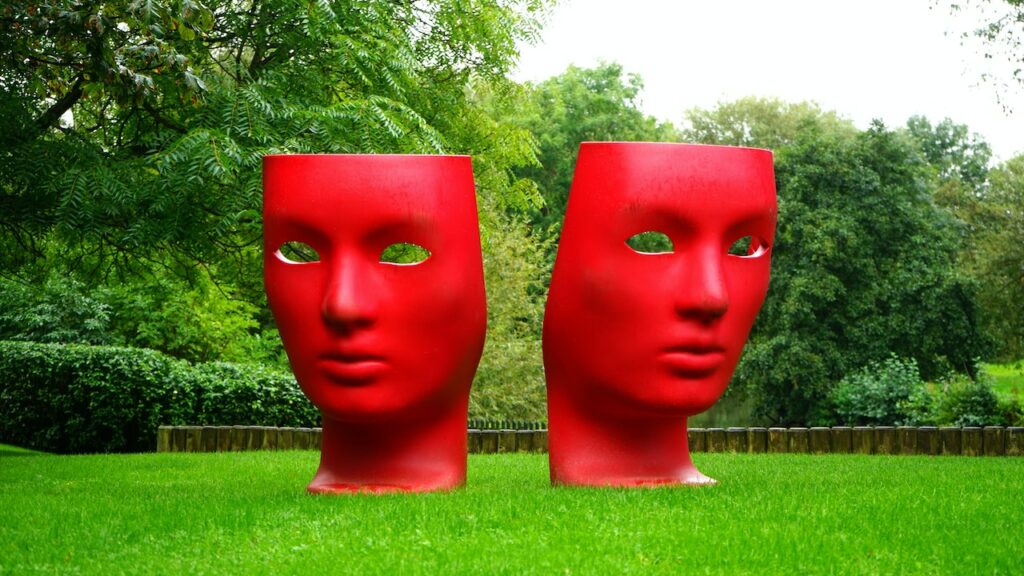
A history of sculpture in painting
The most famous post-war ‘definition’ of sculpture has it that ‘sculpture is what you bump into when you back up to look at a painting’. Usually attributed to American abstract painter and wit Ad Reinhardt (1913–1967), it was no doubt partly prompted by the frustration many modern painters feel when they have to share gallery space with large sculptures that may upstage their paintings – the earliest being Monet, who fell out with his great friend Rodin when The Burghers of Calais was parked in front of his paintings at a joint gallery exhibition in 1889.
But more often than not painters have learned a huge amount from sculpture, and any rivalry they may feel with sculptors is an intensely creative one. This is made abundantly clear from the Art UK website, with its wealth of paintings that include depictions of sculpture. The sculptures are not there simply as decorative fillers and background, but to stimulate eye and mind. To borrow a phrase coined by anthropologist Claude Lévi-Strauss, sculptures are ‘good to think with’.
Antique sculpture was a major inspiration for artists from the Renaissance until the nineteenth century, and one of the great pioneers in its rediscovery was the Bolognese painter and occasional sculptor Amico Aspertini (1474–1552). He is best known for a series of sketchbooks crammed with drawings of antique sculpture made in Rome in around 1500, and again in the 1530s.
Despite Aspertini’s importance, he has only recently recovered from Vasari’s hatchet job in the Lives of the Artists, where he is portrayed as a crackpot who painted at lightning speed with both hands (the ‘chiaro’ in one, the ‘scuro’ in the other!). Vasari may have been responding adversely to the sinuous intensity of works like the Virgin and Child between Saint Helena and Saint Francis (c.1520), acquired by the National Museum of Wales, Cardiff in 1986, and the only major Aspertini in the UK. He is now admired as an innovative precursor to Mannerism.
Aspertini’s painting is divided into three horizontal bands. He creates intriguing counterpoints between the central trio of monumental painted saints; an evanescent stormy landscape background with buffeted ghostly figures; and the intricately crowded sculptural relief along the bottom that resembles an antique sarcophagus.
Freestanding marble statuettes are arranged before a marble ledge on the which the saints lean, and on which the fidgety Christ child stands: on the left, we see Moses receiving the tablets with the commandments, then smashing them after he finds the Israelites worshipping the Golden Calf; on the right, we see the story of the Biblical King Josiah destroying the idols.
Paradox is piled on paradox. Why did this Bolognese lover of antique sculpture devise fictive sculpture depicting stories that celebrate the destruction of sculpture? Aspertini is trying to express a powerful yet complex idea: that Christianity both superseded and absorbed the world of classical antiquity. Antiquity had first to be destroyed and buried before it could be reborn. Imperial Rome and its temples became the foundation for Papal Rome and its churches; the Popes now owned the finest collections of antique sculpture.
Astonishingly, Christ’s legs are in the same position as those of the smashed statue of a dancing satyr displayed on a pedestal, and his skin is marmoreal. The visual quotation shows that Christian dances of spiritual joy have superseded carnal pagan dances; it also poignantly reminds us that Christ, even more fragile than a marble statue, would be ‘broken’ on the Cross.
The most celebrated antique sculpture in the papal collections depicted the Trojan priest Laocoon and his two sons being attacked by sea snakes sent by vengeful gods.
The original was dug up in Rome in 1506. Laocoon became a standard model for depictions of martyrs, and so moving was the statue that the Venetian writer Anton Francesco Doni wrote that when a spectator sees it, he is so overcome by compassion that he feels bitten by the same snakes and compelled to adopt the same pose, and to writhe in agony.
It is seen here (in reverse) in a semi-wild landscape by Dutch artist Abraham Begeyn (1637–1697), their poses echoed by the twisting oak trees: even nature feels sympathy, but not the bathetic goats.